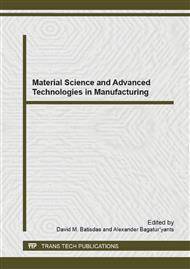p.740
p.745
p.749
p.757
p.764
p.768
p.772
p.776
p.780
Manufacture of RDF (Refuse Derived Fuel) by Carbon Ash from the Waste Tire Pyrolysis Resource Chemical Plant
Abstract:
This study was to investigate the properties of the RDF produced from carbon ash of waste tire. Waste tire block was disposed of the pyrolysis in resource chemical plant to arise the carbon ash. After block technique, the RDF was made by a press at temperature and stress. In general, the set compression strength and heat value of the RDF ameliorate with the extrusion molding density for significant impact. The set ash, volatile content, Combustible content and heat value of the RDF ameliorate with the extrusion and drying temperature for significant impact. The set compression strength and volatile content and heat value of the RDF ameliorate with the adhesion QG15. In the economic and techniques conditions, the results of this study in accordance with appropriate operating conditions of the production and commercialization of marketing orientation.
Info:
Periodical:
Pages:
764-767
Citation:
Online since:
January 2014
Authors:
Keywords:
Price:
Сopyright:
© 2014 Trans Tech Publications Ltd. All Rights Reserved
Share:
Citation:


